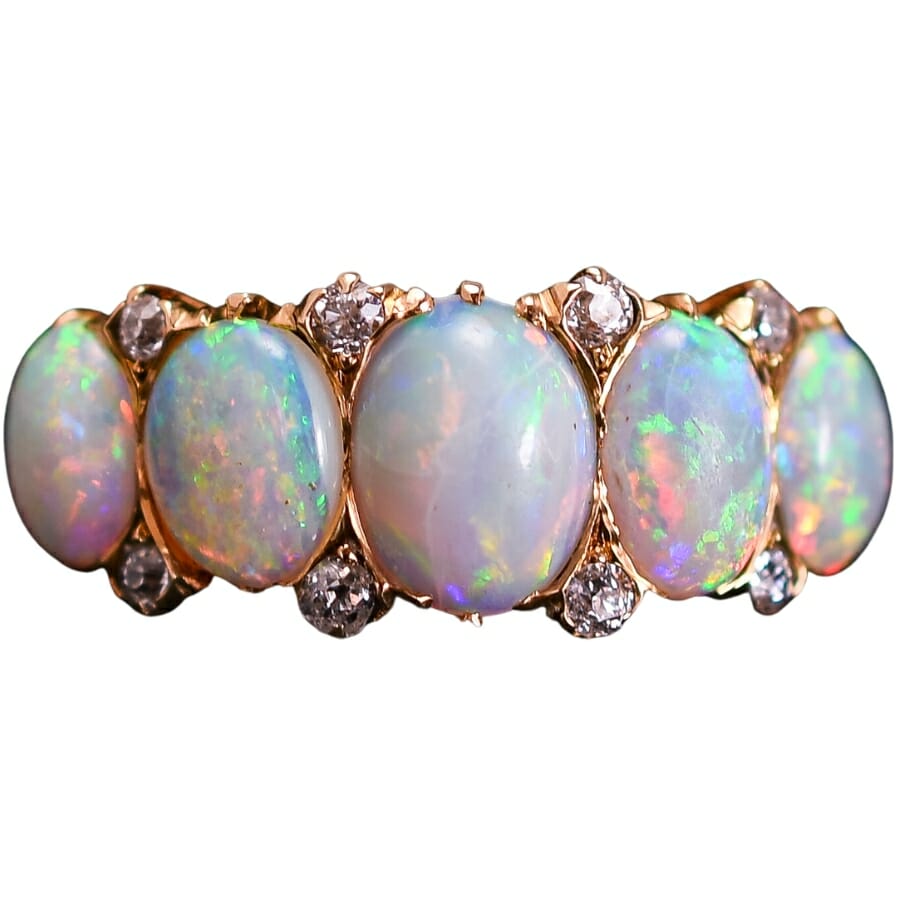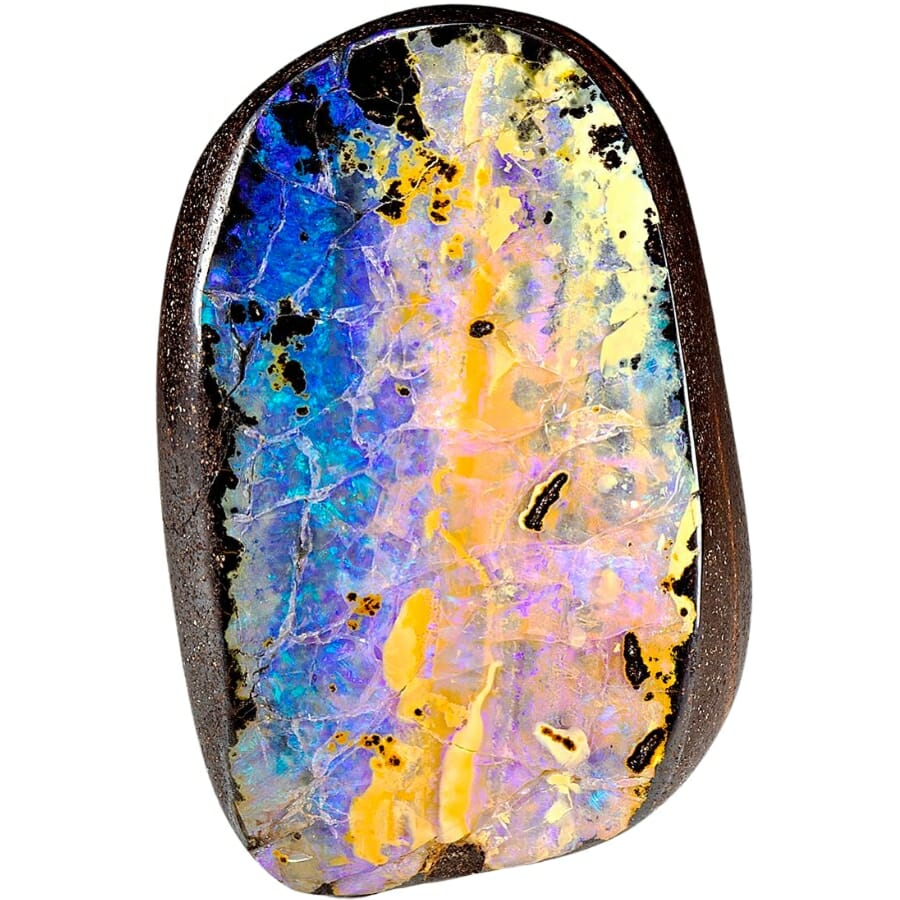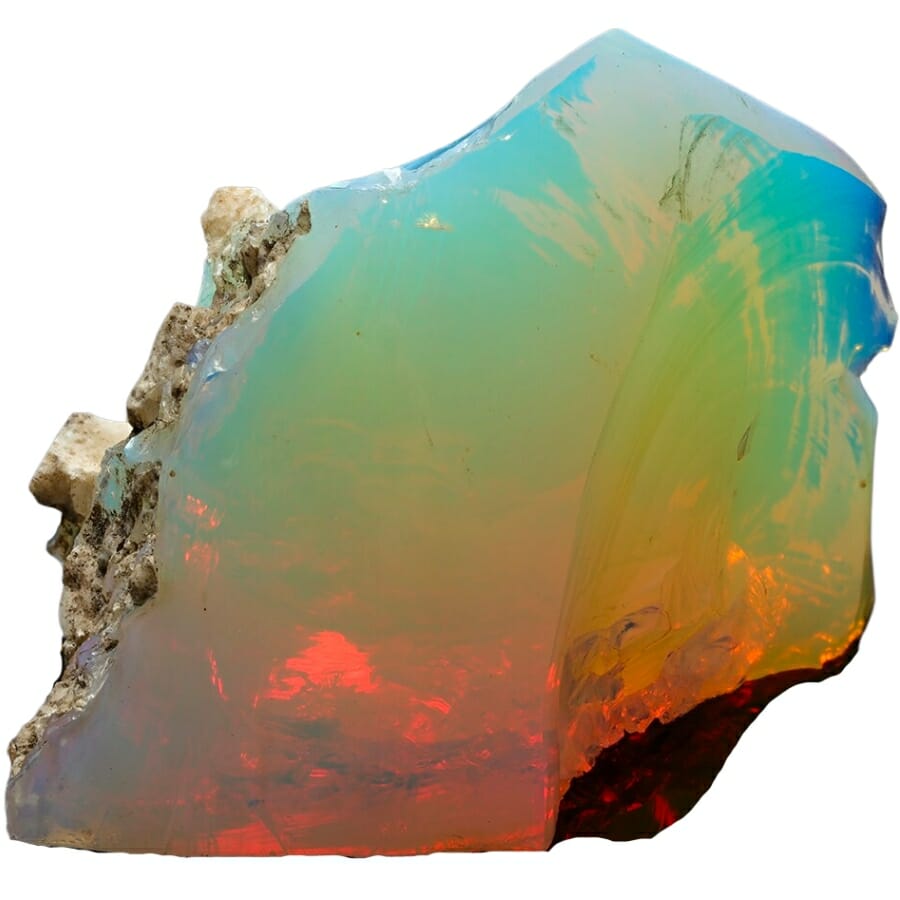Opal is one of the most magical and dazzling gemstones you can find. Its color dances in the light, showing off a rainbow of different shades. People all around the world love them, and not just for looking pretty!
This gemstone has been highly valued for ages for its many uses. But what is opal good for exactly?
When most folks think of it, they picture a shiny piece of jewelry. It’s a popular choice for rings, necklaces, and earrings. But there’s a lot more to this sparkling stone than meets the eye.
In this article, we’re going to dig deeper into opal’s benefits. We’ll explore both its traditional uses and some of its modern wonders. By the end of this, you’ll have a renewed appreciation of opal and all the fantastic things it does.
Understanding Opal And Its Origins

Opal forms when rainwater trickles down into the ground and mixes with silica. Over time, it settles into cracks and spaces in rocks. As the water evaporates, it leaves behind a silica gel, which, over many years, hardens and turns into opal.
Its amazing colors, called “play-of-color,” come from tiny spheres of silica arranged in a special way. When light hits these spheres, it breaks into many colors, like a rainbow!
Historically, this gem has been loved for its beauty. Ancient Romans believed opals were a symbol of hope and purity. In the Middle Ages, people even thought it could make you invisible!
If you’re wondering where to find opal, it naturally occurs in several parts of the world. Australia is its biggest source, but it can also be found in Ethiopia, Mexico, and the US. If you need help identifying your rock, check out our guide on that.
The meaning of opal
The name opal has a journey as colorful as the gem itself. It traces back to the ancient Latin word “opalus,” which was used to describe this shimmering stone. But, the story goes even further back.
The ancient Greeks had the word, “opallios,” which means “to see a change of color.” That’s perfect for opal with its rainbow sparkles. An even older word from the ancient Sanskrit language is “upala,” which means “precious stone.”
Over time, these ancient words influenced each other and evolved into the word opal that we use today.
What Opal Is Good For And Used For
Onto the meat of the matter: What does opal do? A lot! And in this section, we’ll go through each one of them. Remember, these different uses contribute to the overall value of opal.
Jewelry

Opals are a favorite in the world of jewelry because of their unique and dazzling display of colors. When light hits it, it can flash a variety of colors, a phenomenon known as play-of-color.
Jewelers often use opals in rings, necklaces, earrings, and bracelets. When setting it in jewelry, they usually go for a cabochon cut, which is a smooth, rounded shape without facets. This cut best showcases its beautiful color play.
Opals can be the main gem in a piece, surrounded by diamonds or other stones, or they can be part of a larger design.
One important thing to remember is that opals contain water, which makes them softer and more delicate than some other gems.
Abrasives

Some types of opal can be used as an abrasive. Its main component is silica, a hard material that, when crushed into a fine powder, can act like sandpaper.
Just like you might rub sandpaper on wood to smooth it out, powdered silica from opal can help grind and polish other materials.
When opals are being shaped and polished for jewelry, there’s often some leftover dust and small bits. This dust, rich in silica, can be used to polish other gemstones or metals.
In fact, jewelers sometimes use opal waste in their workshops for a smooth finish on their pieces.
While opal might not be the first choice for commercial abrasives since there are cheaper and more efficient materials out there, it’s interesting to know that even the leftovers from this beautiful gemstone can have practical use.
Insulation media

Insulation is important in many industries because it helps keep things at a stable temperature. Imagine how we wear jackets in winter to keep warm; insulation works in a similar way but for machines and structures.
Opal’s tiny pockets of water inside help it resist sudden changes in temperature. In simple terms, if it gets hot outside, this gem doesn’t get hot right away. And if it gets cold, the opal doesn’t instantly turn icy either.
Because of this special property, some high-tech industries, like the aerospace field, have been interested in using opal as an insulator.
They can crush this gem into a powder, mix it with other materials, and create a protective layer. This can then be applied to machines or equipment that need protection from big temperature swings.
Inlay work

Opal inlay work is a technique that showcases its vibrant colors in unique patterns.
Craftsmen choose a base material, like a piece of jewelry or even a decorative item. This could be a ring, pendant, or even the body of a guitar. They then carve out or create small recesses in that material.
Next, they select pieces of opal to fit into these recesses. These bits can be of various shapes, sizes, and colors. Sometimes, the opal is cut precisely to fit the shape of the groove.
Once the opal pieces are chosen and shaped, they’re carefully set and glued into the grooves. After this, the entire piece is polished. This makes sure the opal sits flush with the base material, giving it a smooth finish.
The result? A stunning piece where the bright flashes of opal play off the background material.
Landscaping

Landscaping is all about creating outdoor spaces that are both functional and beautiful. Opal, particularly those that aren’t shiny or colorful enough for jewelry, can play a role in this, too! These are often referred to as “common opal” or “potch.”
Imagine a garden path or a fish pond lined with opal pebbles that shimmer. It adds a touch of natural beauty and a bit of luxury to outdoor spaces.
Some people also use larger opal rocks as focal points in their gardens, much like you’d use a statue or a big plant.
And here’s a fun fact: In Australia, where opal mining is big, it’s not uncommon to see these gems in local gardens and parks.
Unproven Opal Benefits And Additional Uses
Aside from its many practical uses that make it important for you to decipher between real vs fake opals, many claim to have felt and experienced opal crystal benefits that remain unproven by science.
For centuries, various cultures around the world have associated opals with mystical powers or healing abilities. These beliefs often arise from cultural traditions, ancient myths, or anecdotal accounts.
However, as of now, there are no studies that confirm opal can heal ailments, improve emotional well-being, or provide metaphysical benefits.
We are about to discuss some of the claimed metaphysical and healing properties of opal. It is important to know that there is no scientific evidence or studies that support any of these claims in any way.
All studies and research that have been conducted on the healing and metaphysical properties of opal and other crystals have shown that study participants report the same perceived benefits whether they are given real or fake opal.
Any alleged success in healing or other benefits is believed to be either falsely attributed to opal exposure or a result of the placebo effect. There has not been a single claim of healing or metaphysical powers that has been able to be verified.
Opal healing properties

Some people believe that opals possess unique healing properties. They believe that these gems can aid emotional well-being by bringing hidden feelings to the surface and boosting self-worth.
On the physical health side, there are claims that they benefit the eyes, perhaps improving eyesight for some. Additionally, there’s a belief that they can positively impact hair health.
Some even think that opals can play a role in balancing insulin levels in the body and assisting during childbirth, making it smoother.
Opal metaphysical properties

Opals also have a rich history of metaphysical associations. Many people believe that these can amplify positive emotions and feelings, making them more intense.
This means that positive feelings like love, passion, and hope could be heightened when one wears or keeps this gem close.
There’s also a notion that opals can act as protective stones, shielding their wearers from negative energies and harm. In some cultures, wearing jewelry adorned with it is thought to bring good luck and prosperity.
Opal crystal benefits

Beyond these physical and metaphysical properties, artists and creative individuals sometimes turn to opals for inspiration. The gem’s shimmering colors are believed to stir creativity and imagination.
Some also associate it with deep spiritual experiences. They believe that the stone can help in meditation, allowing deeper connection and understanding of the self and the universe.
Whether this is true for you or not, it’s good to remember that they are based on personal beliefs and traditions and not on scientific evidence.


